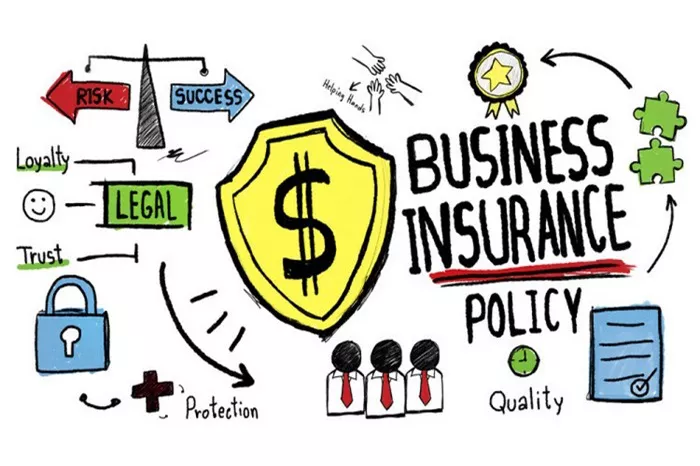When it comes to protecting your home from flood damage, one of the most important questions you might ask is: Do I need flood insurance by address? The answer depends largely on the location of your property and the flood risk associated with it. Flood insurance is a vital safety net for homeowners, especially in areas prone to flooding. However, the requirement for flood insurance isn’t the same for every property. It varies depending on a variety of factors, including geographic location, proximity to flood zones, and whether the property is located in a high-risk flood area.
This article aims to explain how you can determine whether you need flood insurance based on your address, what factors influence the need for coverage, and how flood zones and risk levels play a critical role. We’ll also discuss how to assess flood risk in your area and whether flood insurance is worth considering, even if it’s not mandatory.
What is Flood Insurance?
Before exploring the need for flood insurance based on your address, it’s important to understand what flood insurance is and what it covers. Flood insurance is a specific type of property insurance that protects homeowners from financial losses caused by flooding. Flooding can result from many sources, including heavy rainfall, river overflow, hurricanes, or even burst pipes.
There are two main types of flood insurance coverage:
Building Coverage: This protects the structure of your home, including the foundation, walls, and fixtures like plumbing and electrical systems. It can also cover things like air conditioning systems and large appliances that are permanently attached to the house.
Contents Coverage: This protects personal belongings, such as furniture, clothing, electronics, and anything else inside the home that could be damaged by flooding.
Unlike regular homeowners’ insurance, which typically doesn’t cover flood damage, flood insurance is specifically designed to provide protection in these cases.
How Does the Location of Your Property Affect the Need for Flood Insurance?
Whether or not you need flood insurance largely depends on the flood zone where your property is located. FEMA (Federal Emergency Management Agency) has created detailed flood maps that categorize different areas into flood zones based on the likelihood of flooding. These zones indicate how likely your property is to experience flooding.
High-Risk Flood Zones: Special Flood Hazard Areas (SFHAs)
Properties located in high-risk flood zones are required to have flood insurance if they have a mortgage backed by a federal agency. These areas are identified as Special Flood Hazard Areas (SFHAs) on FEMA’s flood maps. SFHAs are zones that have a 1% or greater chance of flooding each year, or areas that have a higher likelihood of flooding due to river or coastal flooding.
If your home is in an SFHA, your mortgage lender will require you to purchase flood insurance as a condition for the loan. This is because lenders need to protect their investment in case your home is damaged by flooding.
These high-risk areas are designated by flood zones like:
Zone A: Areas that are subject to flooding but lack detailed flood elevation data.
Zone AE: Areas with a 1% chance of flooding annually, along with detailed flood elevation data.
Zone VE: Coastal areas with a high risk of flooding from storm surges or high waves.
Moderate- and Low-Risk Flood Zones
Not all areas are at high risk for flooding. In fact, there are moderate- and low-risk zones that have a much lower chance of flooding. These are areas outside of SFHAs and are designated as Zone B, Zone C, and Zone X by FEMA. While the risk of flooding in these areas is less than in SFHAs, it’s still possible, especially during periods of extreme weather or heavy rainfall.
If your property is located in one of these low-risk zones, flood insurance is not mandatory. However, it is still a wise choice for homeowners who want extra protection. Floods can happen unexpectedly, even in areas that are considered low risk, and flood insurance can save you from costly damages.
Some reasons to consider flood insurance, even if you live in a low-risk zone, include:
Recent Changes in Flood Maps: Flood zones can change, and properties that were once considered low risk may find themselves in higher-risk zones.
Peace of Mind: Flood insurance offers peace of mind, knowing your property is protected in the event of unexpected flooding.
Local Flood History: Certain areas, although categorized as low-risk, have experienced flooding in the past. If your address has a history of flooding, it might be a good idea to purchase insurance.
How to Check if You Need Flood Insurance Based on Your Address
If you’re unsure whether you need flood insurance, the first step is to check your flood zone designation by your property’s address. Here’s how you can do that:
1. Check FEMA Flood Maps
FEMA provides an online tool called the FEMA Flood Map Service Center, where you can search for your address to find out which flood zone your property is located in. You can view detailed flood maps and see if your home is in a high-risk area (SFHA), moderate-risk area, or low-risk area.
High-risk zones (SFHAs) require flood insurance if you have a federally backed mortgage.
Moderate- and low-risk zones may not require flood insurance, but it’s recommended.
2. Use the Flood Insurance Rate Map (FIRM)
FEMA’s Flood Insurance Rate Map (FIRM) provides a detailed map of flood zones in your area. By searching for your address, you can determine whether you are in a high-risk flood zone. Even if you are not in an SFHA, checking the FIRM can help you assess the likelihood of a flood in your area.
3. Consult with Your Insurance Agent
You can also reach out to an insurance agent who specializes in flood insurance. They will be able to review the flood risk for your address and help you determine if flood insurance is needed.
Why Flood Insurance Is Important, Even if It’s Not Required
While flood insurance might not be required by law in certain areas, there are still strong reasons to consider purchasing it, especially if you live in a flood-prone area or an area where flood maps have recently changed.
1. Flooding Can Happen Anywhere
Floods are not limited to areas that are marked as high-risk flood zones. In fact, about 20% of flood claims come from properties outside of high-risk areas. This means that even if your property is not in a high-risk flood zone, you could still be at risk. Flash floods, heavy rainfall, and hurricanes can all cause flooding in unexpected locations.
2. Protect Your Property and Belongings
Flooding can cause significant damage to both your home and your personal belongings. Without flood insurance, you would be responsible for covering the costs of repairs or replacements, which can be overwhelming. Flood insurance helps ensure that you won’t be financially burdened by damage caused by floods.
3. Affordable Coverage Options
Flood insurance is often more affordable than homeowners realize. While premiums will vary depending on factors such as your location and flood zone, the cost of flood insurance can be relatively low compared to the potential cost of repairing flood damage.
For those in moderate- or low-risk areas, flood insurance premiums can be as low as a few hundred dollars per year. This makes flood insurance a valuable investment, even for properties outside of high-risk zones.
Conclusion
To answer the question, Do I need flood insurance by address? — it ultimately depends on where your property is located. If your home is in a high-risk flood zone, flood insurance is likely mandatory if you have a mortgage. If it’s in a moderate- or low-risk area, flood insurance is not required, but it is still worth considering to protect your home and belongings from the unpredictable nature of floods.
Regardless of whether flood insurance is required by law, it is always a good idea to assess the flood risk for your address and determine if the coverage makes sense for you. Flood insurance is a relatively affordable way to protect your investment and ensure you are financially prepared in case of a flood.
Related topic:
What’s the Minimum Flood Insurance You Really Need?



















